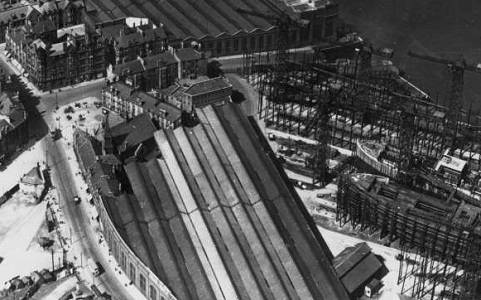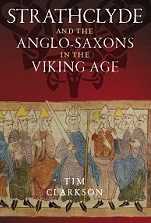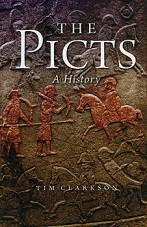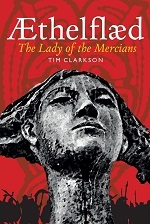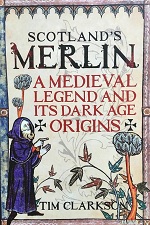
Replica of the Jordanhill Cross at Govan (Photo © B Keeling)
A new website for the carved stones at Govan has recently been launched. It’s one element in a larger project aimed at improving how this unique collection of early medieval sculpture is displayed and publicised.
The stones are housed inside Govan’s old parish church (‘Govan Old’), the front of which can be glimpsed in the above photograph. They comprise one of the largest collections of Celtic sculpture in the British Isles and are well worth seeing. Anyone who appreciates Pictish stonecarving, for instance, should visit Govan to see how the artistic legacy of the Picts inspired and influenced their neighbours in other parts of Scotland. The Govan sculptors developed a distinctive style that spread to the furthest borders of the kingdom of Strathclyde, reaching as far north as Luss and as far south as Hamilton. This ‘school’ of sculpture was characterised by certain features, such as a chunky form of Celtic interlace. To most modern visitors, however, the most recognisable monuments of the ‘Govan School’ are the Viking hogback tombstones.
Here’s what the website says:
Visit Govan Old Church and discover the unique collection of early medieval stones carved in the 9th–11th centuries to commemorate the power of those who ruled the Kingdom of Strathclyde. Explore the 31 monuments dating from this period which include beautifully carved crosses and cross shafts, and 5 magnificent hogback stones. Enjoy the intricate interlace carving and warrior figures on the collection’s outstanding piece – the Govan Sarcophagus, the only one of its kind carved from solid stone from pre-Norman, northern Britain.
Opening times, a location map and contact information for Govan Old are also shown, together with an illustrated timeline of Govan’s history and a slideshow of a visit by Kelvingrove Young Archaeologists. A trail leaflet, with a map of the church interior showing the layout of the stones, is available as a PDF download. Admission to the church is free, as are the guided tours.
Follow the picture link below to go to the website.

* * * * * * *
Read Full Post »


